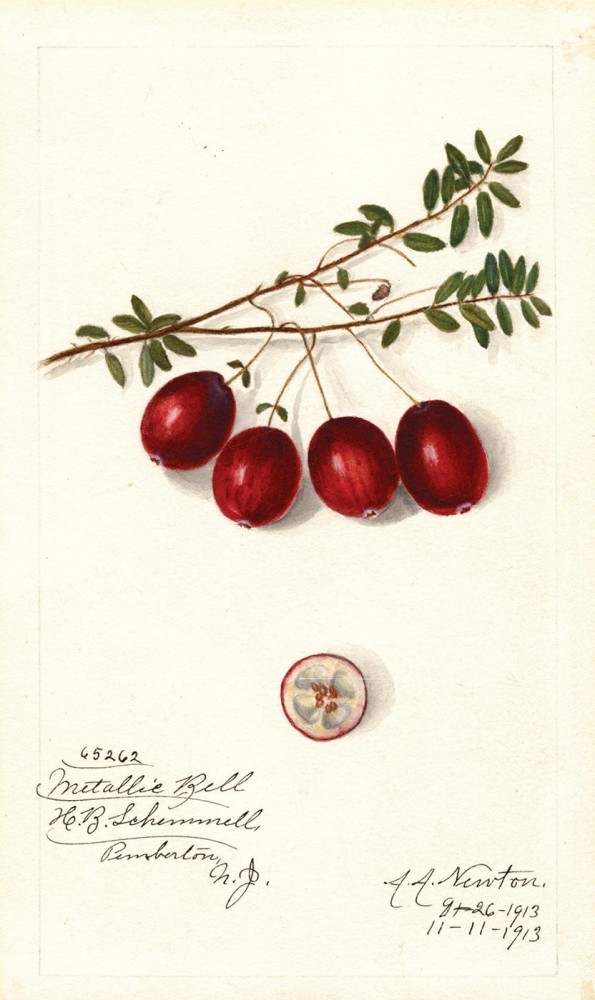
Chances are, you’ve already eaten cranberries (Vaccinium macrocarpon) as a tart Thanksgiving condiment whose congealed sauce keeps the shape of its supermarket can. When I was young, I took this as a sign that cranberry sauce must be the artificial product of some laboratory. But actually, cranberries are just excellent at gelling, perhaps more than any North American fruit.
Cranberries are such close relatives of blueberries and huckleberries that they are classified in the same genus (Vaccinium), but cranberries are much pickier about their habitat than their wider-ranging cousins. Cranberries grow almost exclusively in the otherworldly, acidic environment of the peat bog. This means that cranberries are best gathered with a careful step and a serious pair of rubber boots. If it weren’t for this fact, they would be much more widely gathered as they were by the region’s first inhabitants.
Cranberries are sprawling, trailing, woody plants with wiry twigs that are something between a shrub and a vine. Their alternate, simple, evergreen leaves are short and blunt with slightly rolled margins. Vaccinium macrocarpon is not the only species. Its diminutive relative, V. oxycoccos, is nearly identical and just as edible. There is little reason to differentiate them, and to my knowledge, there are no poisonous plants that might be mistaken for them. (A third species, V. vitis-idaea, while also edible, is mostly found in rocky, mountainous terrain.)
Even though cranberries don’t ripen until the fall, I recommend looking for cranberries in the summer for two reasons. First, travel in the bog is not quite so cold during the summer months. Second, the cranberry flowers are one of the bog’s prettiest and are well worth the trip on their own. These are small and nodding at the end of long stalks with two tiny leaves. The pale pink petals pull back away from a crane-billed cone of stamens. Those flowers bloom for much of the summer and then mature into the firm, red, juicy berries in the fall. After early autumn frosts, gather cranberries by hand. There’s no need to rush; cranberries can be found until the snow falls and sometimes even into the next spring.
If you feel bold, cranberries are edible raw. For most people, though, cranberry sauce is the preferred preparation. To make it, heat your cranberries in a pot with just enough water to keep them from burning, stirring occasionally, until the berries pop and break. Then puree them with a fruit strainer. Cranberries require no gelling agent, as they are naturally high in pectin. They gel themselves. Make sauce with about 5 cups of sugar to 6 cups of puree. Even though this may sound like a lot of sugar, don’t underestimate the cranberry’s sour power. Can the sauce in a wide-mouthed jar, and it will slip right out just like Grandma’s does.
Cranberries were probably one of the first foods from our region that were eaten around the world. They store well, are easy to preserve, and have an unforgettable flavor. For those of us who forage them, they also carry memories of crisp days in the wild bogs. Nothing could be sweeter.

